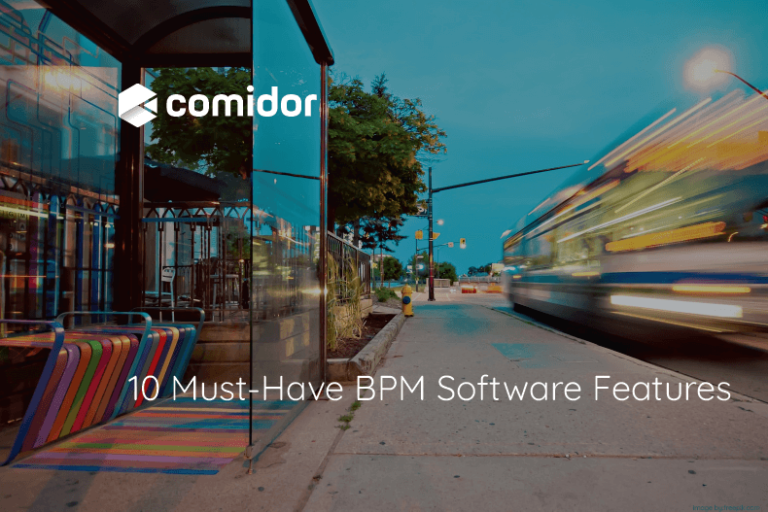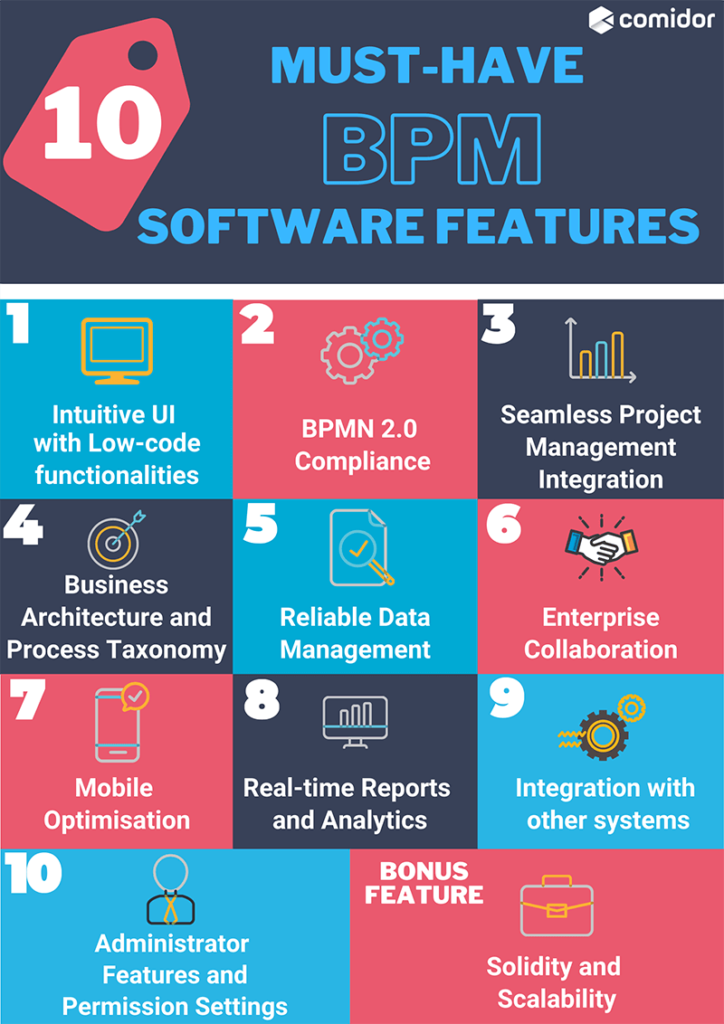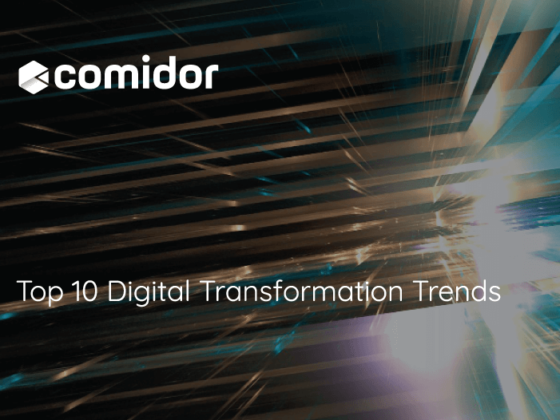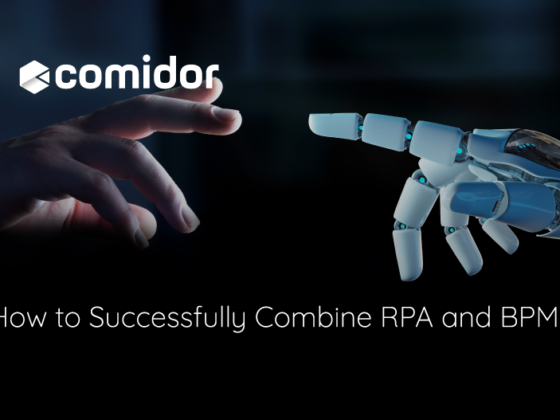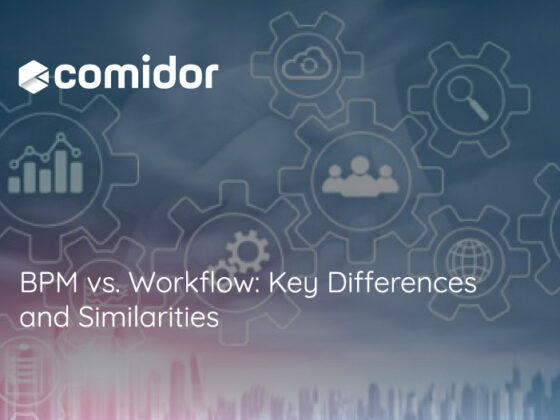Business Process Management (BPM) is a discipline in operations management in which people use various methods to discover, model, analyze, improve, and automate business processes. BPM provides your organization with a systematic way of managing business processes in an effective and efficient way. Business Process Management Solutions (BPMS) are software tools designed to carry out the essential operations of business process management, thus ensuring optimal efficiency and productivity. Staying on top of your game requires a solid Business Process Management (BPM) platform to work with. It is really not a surprise that choosing the right BPM platform can be quite challenging since it can mean either the success of your company or its failure. In this light, here are all the 10 must-have BPM features that you should consider in order to make a smart decision.
10 must-have BPM features of the best Business Process Management software solutions
1. Intuitive UI with Low-code functionalities
BPM platforms unlock a wide range of opportunities for organizations to efficiently model, monitor, streamline, and automate sophisticated and demanding business processes.
Until recently, orchestrating and customizing business processes was a complex work that could only be completed by developers.
Fortunately, there are now Low-code BPM platforms that you can be utilized to design processes and forms, code-free. These platforms can even capture and provide insightful data on how each process flows to get team members on the same page.
So, the best way is to look for a platform that is business-friendly, involves little to no coding (low-code functionality), and lets users build and manage their own processes with little to zero IT support.
2. BPMN 2.0 Compliance
BPMN offers the graphical depiction capability of the business process modeling. BPMN 2.0 is considered to be a must-have BPM feature of all Business Process Management platforms. This enables the users to transfer BPMN process flow diagrams from one tool to another. Without this feature, organizations should design and build a process flow from scratch. BPMN 2.0 compliant platforms recognize all the standard BPMN diagrams and design elements.
3. Seamless Project Management Integration
Isn’t it a pain (and a huge waste of time and energy) to navigate through multiple systems and platforms? That’s why it is always nice to have multiple tools integrated into a single system. One of the numerous capabilities of an integrated software system is project management. This feature helps projects flow more smoothly and efficiently and even allows team members to share data and resources with each other.
To be more specific, we appreciate project management-related features such as what-if analysis to gauge possible results of upcoming process changes (it helps in making quick decisions when needed), Gantt charts that can serve as a visual reference of a project’s progress, and dedicated project tabs or dashboards such as Kanban boards for better organization.
4. Business Architecture and Process Taxonomy
The business architecture enables organizations to design and execute their business strategy, run their business more efficiently, and accomplish their strategic goals. With a top-down and bottom-up view of the whole business architecture, you are able to get a business-value-centric perspective of all the business processes per department.
BPM platforms that incorporate business process mapping and organizational structure designing capabilities improve the visibility and transparency of the whole organization.
5. Reliable Data Management
It is imperative for businesses to realize that data is the fundamental asset that employees are dealing with as part of their daily business tasks.
Employees handle a massive amount of digital information and it is simply impossible to go through it manually.
Instead, a BPM platform does not just go through, and capture all this information, but also stores and manages the Big Data in a system-wide data repository that can be accessed by anyone in the organization.
Don’t forget to consider the security and cloud-storage features that your preferred BPM provides. We cannot stress the importance of these BPM features enough. Your BPM platform must be able to guarantee that your data can’t be accessed maliciously, nor will it be exposed to getting completely wiped out in case of a breach or even a natural event.
6. Enterprise Collaboration
In the time of crisis, professionals understand the importance of business collaboration between teams within an organization. From content sharing to internal messaging and discussing business topics, BPM solutions should offer a central user portal and knowledge base where users can share information safely, communicate faster, get an overview of business processes, and plan their work.
7. Mobile Optimisation
Have you noticed that the landscape of the workforce is steadily shifting towards remote working? Except for the pandemic impact that makes remote working a necessity, there is an assumption that this is due to the flexibility and convenience that the digital era provides. As more and more people use mobiles, be sure that your BPM solution is optimised for mobile. Users have a low tolerance for applications that can only use when they sit at a desk. Thus, we really take mobile optimisation very seriously.
Team members need to be able to create their own working environment and access the BPM platform remotely, even with just a smartphone in hand. Plus points if we can get other online work tools integrated as well so that our team members can work on a project anytime, even when they’re off-site.
8. Real-time Reports and Analytics
Reports are one of those repetitive yet crucial tasks that you have to do in order to keep track and stay on top of things. Fortunately, with BPM platforms there is a way to get this process completely automated together with accurate, real-time analytics. With KPIs Dashboards you can get valuable insights at a glance, monitor your business performance, and identify bottlenecks.
Most important, you should be able to review statistics and metrics that show all open tasks, the current status of an item, how long it takes to complete tasks, etc. You should also have the ability to customize the reports, download the reports, and carry out analysis as required for process efficiency reviews.
9. Integration with other systems
Most organizations have multiple systems in place. A BPM system should communicate with all the existing software systems and other 3rd party systems. The ability to integrate with core systems is one of the most critical BPM features an organization should take into account before investing in any BPM system. Without powerful integrations, users are obliged to manually transfer data from one system to another to perform tasks and complete processes.
Integrations can be achieved by REST APIs, other connector sets, and built-in connector libraries that allow external functionalities to be included in workflows. In addition, these integrations should include detailed API support, webhooks, REST APIs, etc.
10. Administrator Features and Permission Settings
A BPM solution must have powerful administrator features. As an administrator, the user needs to carry out simple tasks such as reassign individual tasks, bulk reassigns, delete items, and edit forms as needed in the business process, without having to depend on an administrator from the BPM solution provider to get any work done.
The access control level you want to put in place also counts. You may want to display only certain fields to people, restrict access in some sections of your form to a few people, or give permission for some part of your data to a team. You can best utilize your BPM system once you are able to handle all of these different situations.
These software solutions are designed to help businesses optimize their everyday business processes to maximize efficiency and productivity. Comidor services are able to satisfy many business needs for BPM solutions.
BONUS FEATURE: Solidity and Scalability Is the Key
The BPM market is scaling rapidly and a new breed of BPM solutions combines advanced technologies such as RPA and AI/ML to help organizations respond to their challenges. However, every organization operates in a different way. Moreover, you should ensure that a chosen solution can handle your business size. Some solutions are able to handle small- and medium-sized businesses while others handle enterprise operations.
For that reason, before looking for a BPM solution, make sure it is flexible, agile, scalable, and has all the BPM features you need to fit your business needs.
Are you interested in learning more about Comidor BPM?


